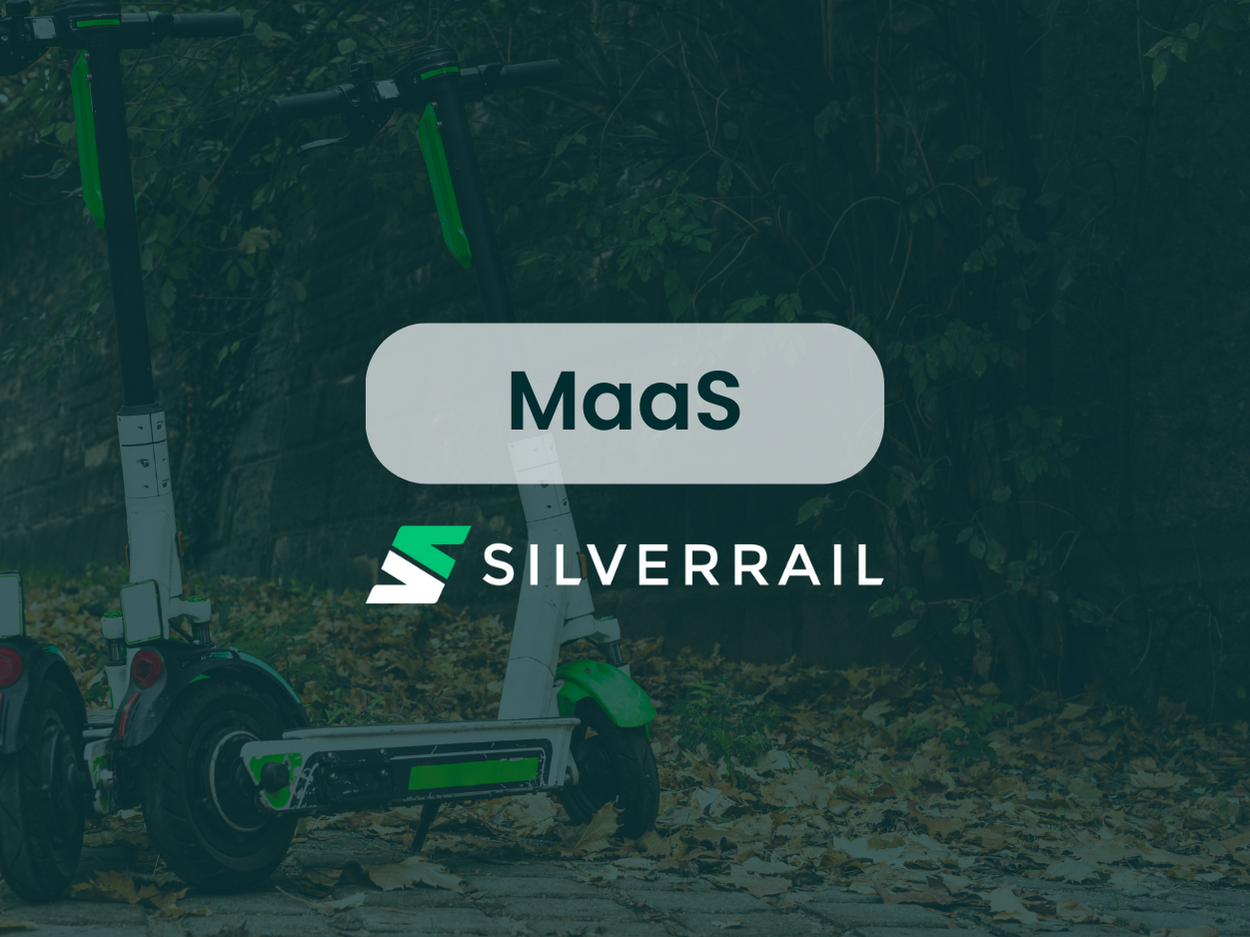The Challenges of MaaS
01/11/2021
Written by Linda Branang
Why moving from A to B isn’t always as easy as 1,2,3
With the explosion of micro-mobility services such as scooters and e-bikes, as well as the rapid pace of urbanisation, creating smooth door-to-door passenger experiences will undoubtedly play a vital role in the uptake of rail. However, the technical challenges of unifying multiple transport systems and developing platforms that talk to each other are much greater than you might think.
Specifically, the growing demand for convenience, speed and affordability from today’s modern consumer requires unprecedented levels of collaboration between several technology systems.
In the same way that all websites are built to work across a number of different devices and multiple web browsers, the systems responsible for issuing tickets, planning routes and showing timetables must also work in harmony if we’re to develop unified passenger experiences that allow multiple stakeholders to service passengers. From low emission taxi services to digital rail ticketing, electric scooter apps, journey planners, carbon calculators and even Online Travel Agencies (OTAs), the future of mobility relies on the connectivity of seemingly disconnected parties.
So, what are the key collaboration challenges associated with Mobility as a Service (MaaS) and how can we build powerful technology solutions that make it easier than ever to get from A to B?
Why Is MaaS Important?
Before we dive into the technical nuances of MaaS, let’s begin by outlining the motivations behind this idea of building multi-modal experiences that allow passengers to plan, book, and pay for journeys through a joint digital channel.
MaaS is the integration of various forms of transport services into a single mobility service that is accessible and on-demand. Transport modes can include everything from trains to buses, boats, trams, bicycles, scooters, rental cars, and taxis, but could also include things like self-driving cars and drones in years to come.
While using each of these transport modes in isolation would typically involve buying tickets from various sources and flicking between several journey planners to coordinate a mishmash of services, MaaS enables seamless multi-modal travel where passengers can plan and pay through a single app. What’s more, some of the more advanced MaaS providers even allow users to choose from various payment options which can range from simple pay-as-you-go plans to unlimited ‘all you can eat’ bundles — much like a mobile phone contract.
So, now that we have a general idea of what MaaS is all about, let’s take a look at its key benefits:
Efficiency
Possibly the biggest driver for MaaS in today’s society is the increased efficiency associated with unifying multiple transport modes and sharing data to eliminate inefficiencies. With the UN predicting that 68% of the world’s population will live in urban areas by 2050 and data from the 2021 Urban Mobility Index showing that the average city has unleashed less than half of its urban mobility systems, the opportunity to iron out these inefficiencies and build an ecosystem approach to urban mobility is enormous.
Specifically, optimising multi-modal transport systems requires compatible datasets so developers can harness the power of positive feedback loops. These work by using data to improve the user experience which, in turn, encourages more people to use the service and feed it with yet more data. As time goes on, the system gets smarter and inefficiencies become easier to spot. Whether it’s aligning bus timetables with train schedules to minimise layover times or communicating the location of the nearest electric scooters to a train station, sharing data between transport modes helps to improve the fluidity of mobility across a city.
True pioneers in the MaaS space like SkedGo with their multi/mixed modal APIs and Jugnoo with their suite of on-demand transport apps are leading the way with technologies that combat the inefficiencies associated with multi-modal transport and provide users with seamless front-end experiences.
To give another example, the MaaS solution provider, Moovit used crowdsourced mobile mapping data at the 2016 Rio de Janeiro Olympic Games to help keep attendees and athletes moving amidst the crowded conditions. According to Olympic transport expert, Philippe Bovy, Rio’s post-Olympic transport revolution saw a 25-30 year leap in technical progress in just 7 years — a feat that wouldn’t have been possible without organisations like Moovit embracing the power of data to eliminate inefficiencies.
Environment
One of the biggest tension points for urban mobility is car usage. With road vehicles accounting for 72% of the world’s total carbon emissions from the transport sector, reducing the number of cars on our roads is a matter of urgency.
However, a 2019 evidence paper titled ‘The user experience of the railway in Great Britain’ for the Williams Rail Review finds that almost half of short distance infrequent rail passengers said it was easier to use a car than to travel by train and 36% said their main reason for not using trains was that it was easier to use alternative modes.
Although many cities have invested in extensive bus routes, frequent metro services, and affordable travel passes to increase the uptake of public transport (and in some cases, introduced initiatives like Ultra Low Emission Zones and inner-city parking levies to disincentivise car usage), creating passenger experiences that are equatable to road travel remains a challenge for many transport authorities.
Specifically, many passengers enjoy the predictability of car travel and the ability to get from A to B without leaving the comfort of their vehicle. Despite the obvious drawbacks of road travel (traffic, emissions, fuel prices, cost of car ownership, parking, etc.), building a public transport network that can compete with the convenience of cars weighs heavily on creating seamless multi-modal systems that provide a truly door-to-door experience.
MaaS, therefore, presents exciting opportunities for cities to finally win the war over cars and ‘join the dots’ between various transport modes to provide low-carbon alternatives without compromising on convenience. Developing highly-usable solutions that allow passengers to plan and pay for multiple public transport services provides unprecedented levels of control, choice and flexibility. Gone are the days of squinting at bus timetables in the rain or queuing at ticket machines — MaaS empowers passengers with the information and tools they need to take control of their journeys.
Experiences
As with any kind of product innovation, the best developers will place end-user experiences at the centre of the equation. As Steve Jobs once said: “You’ve got to start with the customer experience and work back toward the technology – not the other way around.” While it’s easy for transport authorities to be led astray by efficiency metrics or emission milestones, the ultimate goal of any transport solution should focus on how to provide the best possible passenger experiences, without compromising on strategic goals.
MaaS provides a unique opportunity to deliver seamless passenger experiences through a single platform. Unlike transport solutions of days gone by where passengers would flex around a series of pre-determined practices (e.g. ticketing, timetables, routes, etc.), MaaS puts the passenger in the driver’s seat and gives them the power to enjoy personalised experiences that wrap around their individual needs.
With companies like Ridecell changing the face of urban ridesharing with their breakthrough fleet management system, Bolt housing a ride-hailing app under the same roof as an electric scooter rental service, and the futuristic thinkers at Zoox reinventing personal transportation with their AI-enabled autonomous ride-hailing cabs, passenger experiences are changing by the day.
What’s more, technological developments in things like drones and water-based innovations such as SeaBubbles’ flying hydrogen boats and RoundAround’s ‘bridge made of boats’ present exciting opportunities for MaaS that are set to enhance passenger experiences in ways that we couldn’t have imagined.
3 Key Collaboration Challenges for MaaS
Now that we’ve covered the commercial, social and environmental benefits of MaaS, let’s explore why collaboration plays such a vital role in futureproofing transport technologies.
While it’s perfectly possible to build forward-thinking transport solutions in isolation, the contextual challenges of developing innovative technologies that integrate with existing infrastructure and work harmoniously with other platforms are far greater.
We can break these challenges into three discrete areas:
- Logistical: Uniting Multiple Stakeholders
One of the biggest challenges with MaaS is the task of coordinating multiple stakeholders to work towards common goals. Owing to the varying speed and agility of different organisational structures, achieving harmonious decision-making where multiple stakeholders are ‘singing from the same hymn sheet’ can present a real headache for MaaS developers.
Large-scale MaaS initiatives often require buy-in from government bodies, public transport authorities (PTAs), and private operators who won’t necessarily align on certain decisions. Be it a conflict of interest, legal roadblocks, internal policy mismatches, time constraints or strategic misalignments, uniting multiple stakeholders is the Achilles’ heel for many MaaS projects.
Aligning stakeholders in the early stages of a project and working alongside a technology partner that understands the strategic objectives is vital if transport authorities want to deliver truly seamless solutions that marry data compatibility with technical functionality. Without a united approach, MaaS systems will only work in isolation and won’t benefit from the positive feedback loops that fuel long-term innovation and passenger loyalty.
- Technical: Creating Common Standards
As you can imagine, building technology solutions that work in harmony with other systems and share information back and forth is no mean feat. In the same way that languages evolved and diverged across different communities, the technical standards used across different organisations can vary significantly.
When it comes to technical compatibility and sharing data, this conflict in ‘language’ can present operational complications that often result in clunky end-user experiences, annoying bugs, and the inefficient use of potentially valuable data.
If there are no common standards between transport providers, things like financial settlements on ticket payments or refund protocols can quickly cause issues that impact passenger experiences. Additionally, common technical standards for things like coding languages, platform architecture and API integration are important to avoid the fiddly patching of disconnected systems.
- Financial: Collaborating With Commercial Partners
The collaborative nature of MaaS means it’s often difficult to strike commercial agreements with multiple stakeholders. While smaller travel operators often stand to benefit from the prospect of listing their services on a centrally-controlled platform that attracts a large pool of potential customers, the commercial implications of multi-stakeholder collaborations and negotiating unified settlement and clearing terms can be extremely challenging.
Things like agreeing on how to sell each other’s services, what price points to use, how to issue discounts or what the refund policies should look like all involve complex conversations that many organisations are reluctant to have.
SilverRail has a specific tech capability that handles multi-partner settlement and clearing protocols. We provide clients with a central engine to reconcile payments across multiple suppliers. Instead of placing the burden on passengers to configure each component of a trip and complete transactions with multiple ticket issuers, our advanced settlement and clearing technology does all of the heavy lifting.
From a passenger’s perspective, the complex commercial agreements associated with coordinating a multi-modal journey and collaborating with multiple commercial partners become seemingly invisible.
Organisations that deploy efficient payment reconciliation solutions and partner with stakeholders who share mutual goals are well-positioned to embrace the future of mobility and access a significant proportion of passengers through a single ‘catch-all’ platform.
The Power of MaaS for Rail
The successful delivery of MaaS solutions will play an absolutely vital role in the long-term uptake of rail. The ability to ‘join the dots’ across multiple transport modes via a joint digital channel empowers the modern passenger with unprecedented levels of convenience, speed, and affordability.
Here at SilverRail, we’re extremely excited by the opportunity to embrace MaaS as a tool to make rail easy and provide unrivalled passenger experiences that make for happy travellers and an even happier planet.
To learn more about how we’re changing the way people move through technical innovations, check out how we’re making journey planning simple and rethinking the future of rail content distribution.





